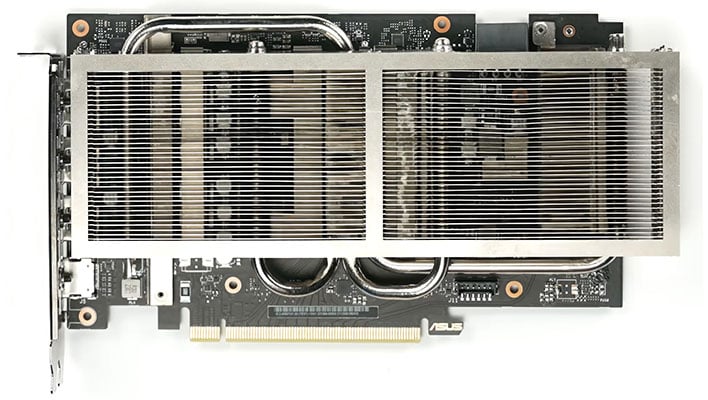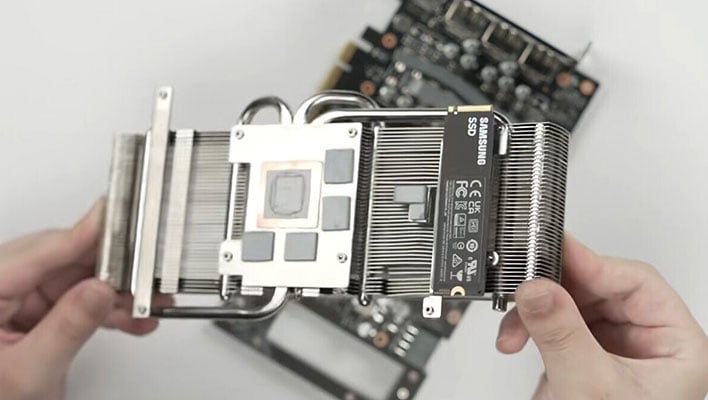ASUS has shown off a new hybrid graphics accelerator and storage PCIe Gen4 card on China’s equivalent of YouTube. GM of ASUS China, Tony Wu, took to Bilibili this weekend to share a concept design which melds an NVIDIA
GeForce RTX 4060 Ti and an M.2 SSD expansion card.
If you have read our
review of the GeForce RTX 4060 Ti, you will be aware that it only uses eight PCIe lanes. However, cards like this one will invariably be located in a full 16 lane slot. ASUS has thus extended the PCIe fingers structure of its concept card to extend the full 16 PCIe lanes – which may be good for support, too. It is also common that some eight-lane PCIe add-in-cards use fake lane pads for support and structural purposes.
With the extra eight lanes available to its PCB designers,
ASUS has been able to add an M.2 2280 port to both sides of the card. In the views of the concept graphics card shared by Wu, you can see that
Samsung 980 Pro PCIe Gen4 SSDs are attached to both sides of the graphics card PCB. On the GPU side of the card, the SSD benefits from the GPU cooling fins and fans directly above. The back-side M.2 slot is accessible vid a simple backplate cutout, and it looks like there would be room for a heatsink on top.
On the topic of cooling, the ASUS video shows the SSDs under test conditions running cool at around 42 degrees C, even when the GPU is being stressed.
If you are wondering about the SSDs getting enough power, we know that the RTX 4060 Ti can suck as much as 160W, and the Samsung 980 Pro SSDs can consume 8.5W each under duress. That combined total is well within the 8-pin power (150W) plus PCIe power (75W) being channelled into this card.
In conclusion, adding two M.2 PCI Gen4 slots to graphics cards, like this one shared on
Bilibili and unearthed by
Everest, is a welcome move. Remember, such compact (twin fan) and mainstream designs might find their way into PCs with smaller and more affordable motherboards, which may have
just one or two M.2 slots built-in.
It will be interesting to see if graphics cards with built-in M.2 slots proliferate after this social media airing. The only drawback we can think of is an unpalatable price uplift on these designs, and/or that they are limited to China or other non-US markets for some reason.





